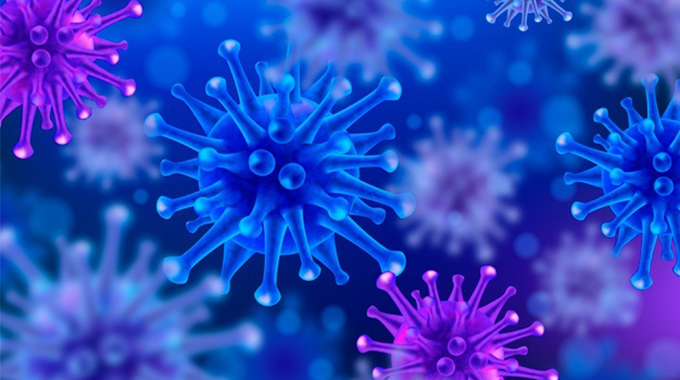Editorial Comment: We are all at risk of Covid-19

Calling Harare the epicentre of Zimbabwe’s Covid-19 infections should neither give comfort, excuses for laxity in other centres nor should it unduly depress the people who live in Harare, Chitungwiza, Epworth and Ruwa that they are somehow singled out for suffering.
For a start, if you get ill it does not really matter whether you were infected in Harare or yonder Gokwe, and if you die it does not really matter if you die in a hospital in Harare or in Karoi, and we need to remember that no one is totally safe.
Secondly, the figures are provincial totals.
Harare is the largest province in terms of population with more than 2,1 million living in the four local authorities of the province.
Harare City is the largest in population, Chitungwiza is third, Epworth is sixth, and even Ruwa now ranks with cities like Kwekwe and Victoria Falls and by itself is far larger than Masvingo City.
Bulawayo is the second largest urban centre, but it is home to less than a third or the population of the four authorities in Harare Province, so you would expect Harare Province to have about three times as many cases and deaths as Bulawayo.
Until recently therefore, Bulawayo was doing far worse but is now about on par with Harare.
In fact, statistics from the Ministry of Health and Child Care show Harare, Bulawayo and Matabeleland South almost at par with each other once you adjust for population, with the other seven provinces well behind.
The two metropolitan provinces are easy to explain, having the large crowds that cities generate, while Matabeleland South has the Beitbridge Border Post and consequently gets saddled with all those coming though and testing positive rather than having an abnormal number of community infections.
Manicaland and Midlands have their numbers pushed by the fourth and fifth largest urban centres, Mutare and Gweru, although both are probably less than half the size of Chitungwiza.
There are a number of reasons why cities will have more Covid-19 infections.
The first is simply that there are more people a single person can infect, since even on a short walk in a city you are likely to meet more strangers in that hour than you might in week in a scattered rural area.
Rural villages are not immune from infection.
There were several cases during the first wave of infection where a single infected person sneaking in from South Africa managed to get several people back in a home village infected, but the numbers were small since it is fairly easy to isolate a village and, very importantly, trace all or almost all the contacts. So the infection can be limited.
In a city daily social relationships tend to go far beyond near neighbours or family.
In normal times people might work, live, shop and pray in several different suburbs, so if you are infected you will have far more people to cough over if no precautions are taken.
And even in a lockdown there are far higher risks of casual untraceable contact.
If say one percent of the people in a suburb or city are infected, then on a quite legal lockdown walk you might pass five of them.
And, when you think about that sort of risk, you then devoutly hope they are wearing a mask and are staying at least 2m from you in particular.
But if you are infected, there is no way of tracing who infected you.
In tracing you can try and figure out some of those you might have infected, but if you were also wandering around badly masked and not keeping your distance, then you could have created a few more centres of infection, anonymously.
When it comes to a potential upsurge in infection, a city is far more vulnerable because so many people live close to each other and has a different circle of social contacts.
All this explains the measures public health authorities have put in place.
They are trying to limit the number of people we interact with closely.
A dozen of people at some illegal midnight party in a crowded city, with one of them infected, will quickly see 100 other people infected, just in normal social activity.
Cutting down on movement generally means a centre of infection can be traced and isolated, or at least gives more time to do this. Again this is easier perhaps in a village environment, but is possible to some degree in an urban setup, and at least minimises the number of people an infected person might come in contact with.
The stress on wearing masks, keeping social distance and temperature checking is now also obvious.
Masking severely limits the amount of virus an infected person can cough out, as well as helping to stop any of the viruses that do escape from being breathed in. But the main benefit of masking is to protect the uninfected from the infected.
This is why masking has to be universal.
Social distancing gives a second layer of protection. The virus that causes Covid-19 cannot live for that long in air.
So making decent gaps between people means the infected person is not close enough to you, and if you are unwittingly infected, you cannot cough on anyone else.
Temperature screening means a badly infected person cannot gain admittance to whatever is being protected, although someone who is infectious and can still infect others, might not be running a fever.
So this is not foolproof, just another aid.
Personal hygiene and sanitising hands, makes it less likely that we will pick up viruses from a blob of something that has not dried out.
But all of these precautions help in reducing the size of crowds we might be trapped in as reduce passing it on, and then the layers of protection won by masking and distancing and keeping ourselves clean.
But in the end it does not really matter how likely or less likely we will be infected.
What does matter are the steps we are taking to reduce the risks significantly.
And that is why it does not matter whether we are in a high risk or low risk environment, we still have to regard everyone else as a potential source of virus, just as they have to regard us as a source.










Comments